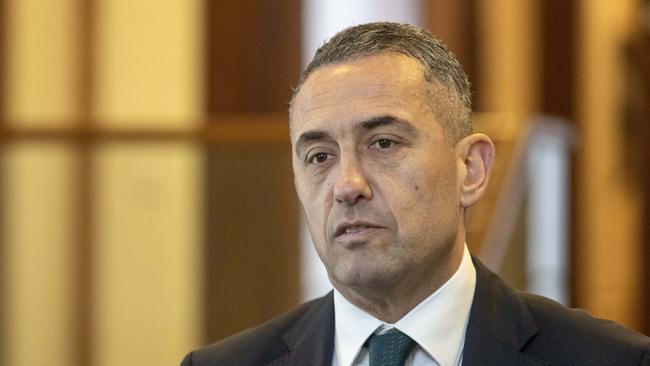Data shows 118 ‘excess employees’ worked in the public sector last financial year – the highest annual figure in a decade
SA taxpayers are shelling out at least $11m for public servants to sit in a government workforce “waiting lounge”, an official report reveals. Join the conversation or vote in our poll.
SA News
Don't miss out on the headlines from SA News. Followed categories will be added to My News.
South Australian taxpayers are shelling out millions of dollars for more public servants to complete menial – or zero – work in a state government workforce “waiting lounge”, an official report reveals.
Latest data shows 118 “excess employees” worked in the public sector last financial year – the highest annual figure in a decade – 94 of those being without work for more than nine months.
While the salaries of excess employees are not disclosed, the average public servant salary in 2023-24 was $95,587, meaning a taxpayer bill for idle workers would be almost $11.3m but may be even higher.
The State of the Sector report, which the Commissioner for Public Sector Employment publishes annually, revealed 100 staff – almost 85 per cent – work for the Department for Infrastructure and Transport.
In contrast, the department employed 85 of the total 112 excess workers during 2022-23 – or more than three quarters of that total.
The number of taxpayer-funded workers sent to what has been dubbed the public service “waiting lounge” hit 150 workers in 2014, it fell to just 11 in 2018-19 before climbing every year since.
Government officials say excess employees who, for a variety of reasons are surplus to requirements but still have a job, undertake different tasks.
This has previously included helping with the Covid-19 response and minor maintenance work.

As a political row erupted on Sunday night, a department spokeswoman said the rising number was due to more employees having been formally declared excess after the outsourcing of train and tram services.
“All excess employees in the department’s redeployment program have been invited to express their interest in opportunities to undertake roles as part of the return of train and tram operations to the public sector,” she said.
“(They) will continue to receive priority consideration for vacancies.
“We expect the number of excess employees to drop when public transport is fully back in government hands.”

Train and tram operations are due to be handed back to the government by July this year.
Opposition transport spokesman, Ben Hood, said it was “yet another example of Labor’s waste and mismanagement” as he questioned why such a large majority was concentrated in one department.
“Why is this growth happening, and why are taxpayers funding these positions?” he said.
“Even with Labor’s promise that these workers will be redeployed when public transport is brought back under government control, what guarantees do South Australians have that this costly bloat will disappear?
Transport Minister Tom Koutsantonis accused Mr Hood of “providing cover for the Liberal Party’s disastrous decision to privatise our train and tram services”.
“It is well documented that the outsourcing of these services created a significant increase in excess employees in the Department for Infrastructure and Transport,” he said.
He claimed the Liberals failed to include the cost of excess workers when claiming savings from the Keolis Downer train privatisation, which was “their entire rationale for the sell-off”.
He added: “Rather than complaining about the problems his party has wrought on the public sector, if Ben Hood wants to ensure excess employee numbers remain low, he should immediately commit the Liberals to never again selling off our public transport assets.”
Mr Hood did not rule out future sell-offs but responded that Labor had been in government for most of the 21st century and “the Koutsantonis blame game doesn’t pass the pub test”.
More Coverage
Originally published as Data shows 118 ‘excess employees’ worked in the public sector last financial year – the highest annual figure in a decade




